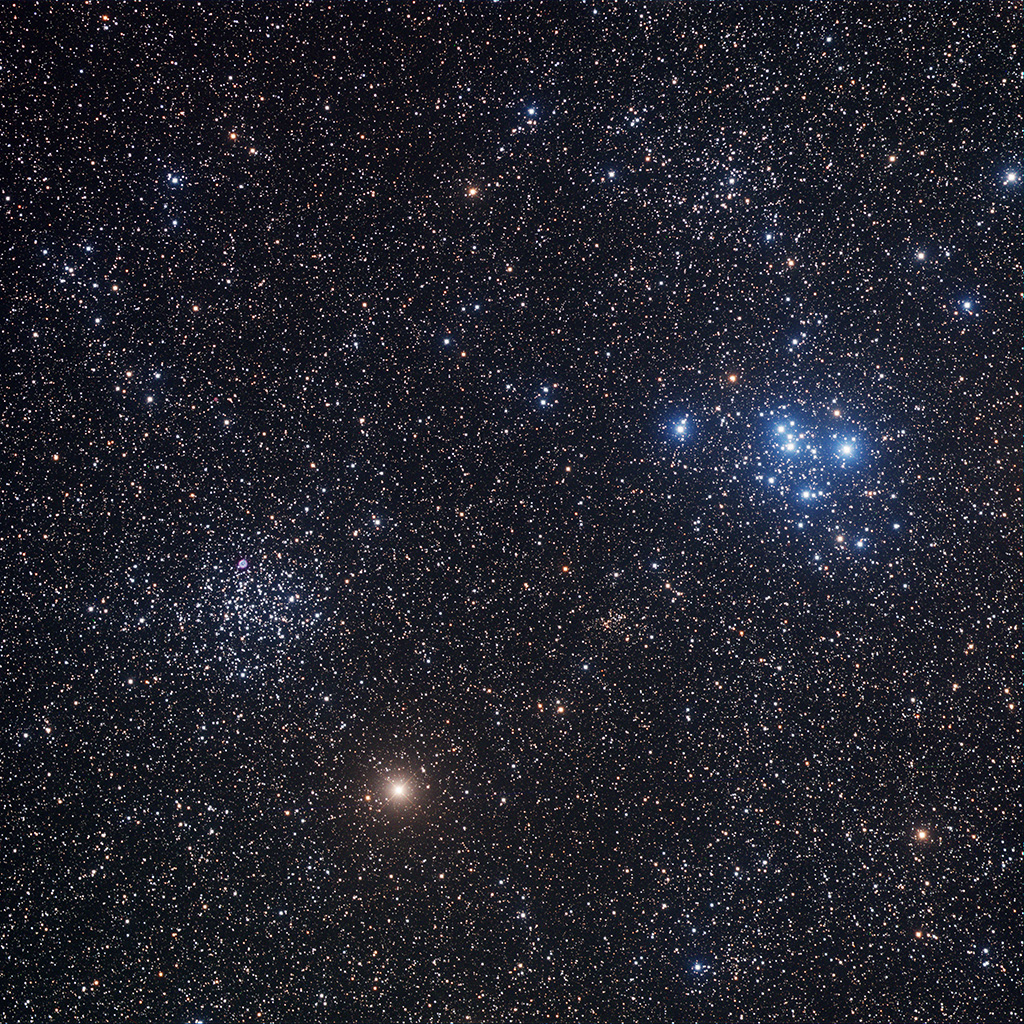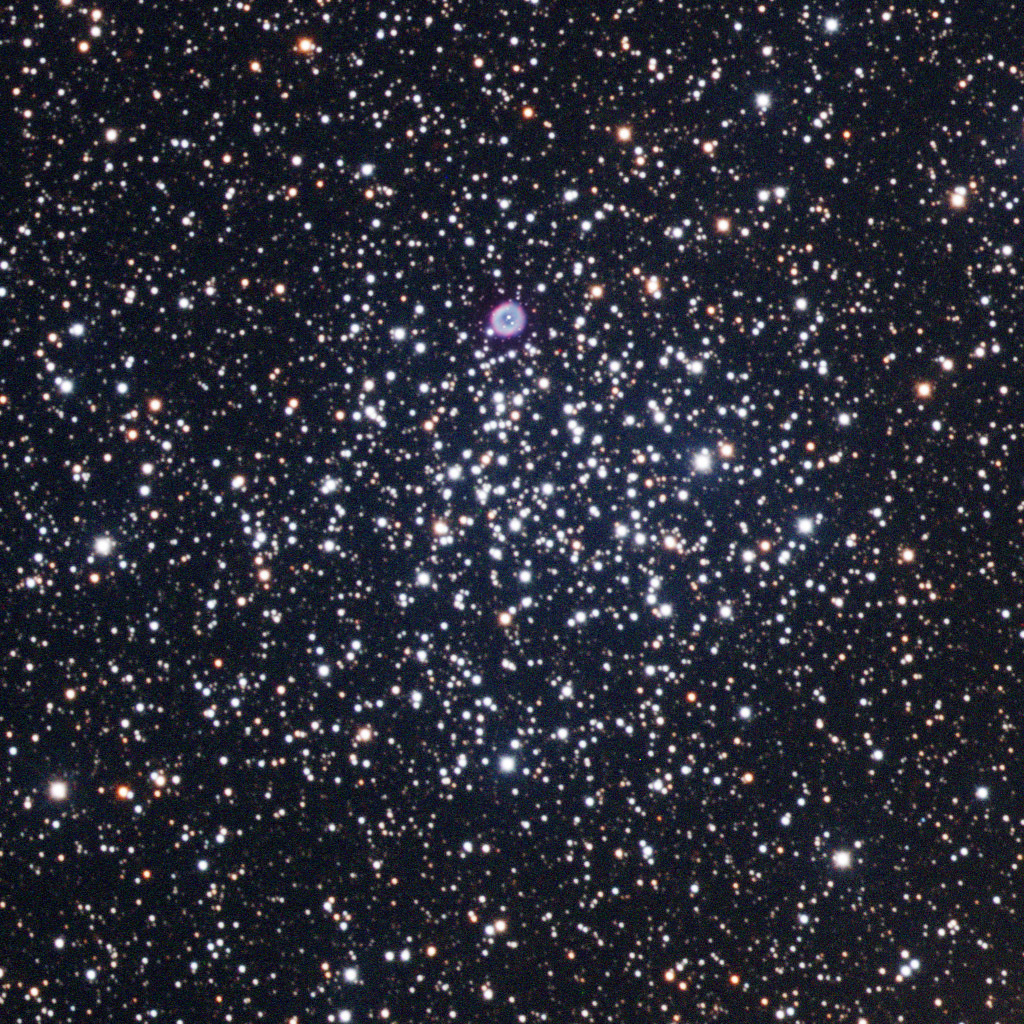In the winter sky, toward midnight, you can look in the southern sky and see the brightest star in our sky: Sirius. Often giving off brilliant flashes of blue, green, and red, this bright white star is unmistakable. About a hand width straight east of it is where we find these two star clusters: M46 and M47.

M47 is the cluster on the right. It sparkles with bright blue stars, set against a crowd of stars of various brightnesses. These stars are massive and young. We know this because to be that blue and bright, they must be fusing hydrogen into helium at an astonishing rate. This means they won’t live long, ending their lives in a few million years as stupendous supernova explosions. Thus, M47 is a young (astronomically speaking) cluster of stars.
In contrast, M46, the cluster visible on the left of the image, is an older cluster. Gone are its blue supergiants, along with any star that lived its life fast and died hard. These stars are all mainstream, run-of-the-mill stars, most of which will last billions of years. In fact, it’s old enough that one of its stars has entered the final phase of life: a planetary nebula. These are so named because they’re generally round, and mimic the appearance of planets through the eyepiece of a telescope. This one does seem to be associated with M46, and adds a beautiful jewel to an already lovely scene.

That M46 is still discernible as a cluster at this age is remarkable. Most clusters would have long ago dispersed into the general stellar population of the galaxy. Only the most massive star clusters have the gravitational power to prevent this. M46 is obviously massive enough to avoid that “fate.”
There are two other clusters clearly visible in this image, though they are much closer to complete dispersion. One is above M47 at about 11 o’clock, and the other is to the lower left, about 7 o’clock. Another cluster is present, but is not discernible against the starry background. We only know a cluster remnant is present because there is a statistically unlikely group of stars of similar age in its location. This cluster is to the lower right, but you can’t find it!
Every star in this image began life in a cloud of dust and gas like last month’s image of M78. The stars formed in clouds like that created clusters similar to these, with hundreds or even thousands of stars in each. As time progressed, the hot blue stars exploded and the rest were left to join the hundreds of billions already orbiting the galactic center. Last month we saw stellar nurseries. This month we see adolescent, adult, and old age stars. In March we’ll see toddler stars!